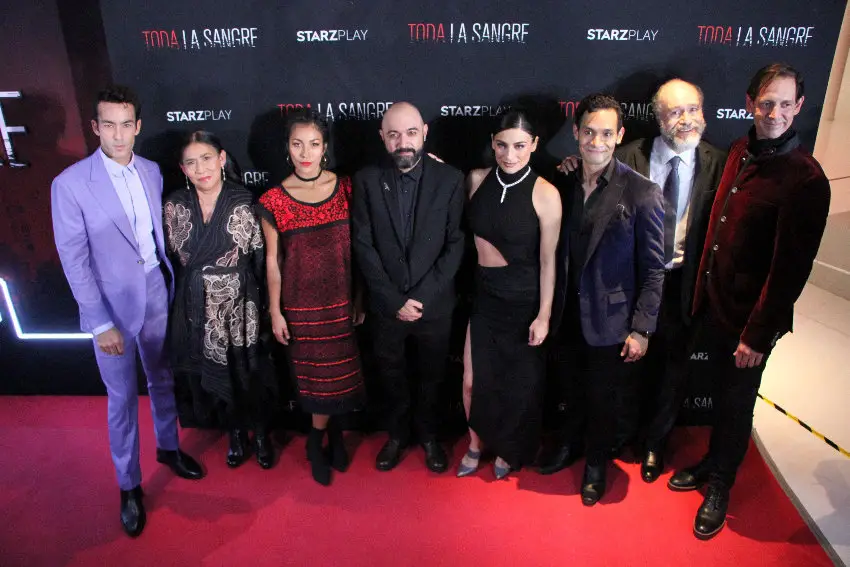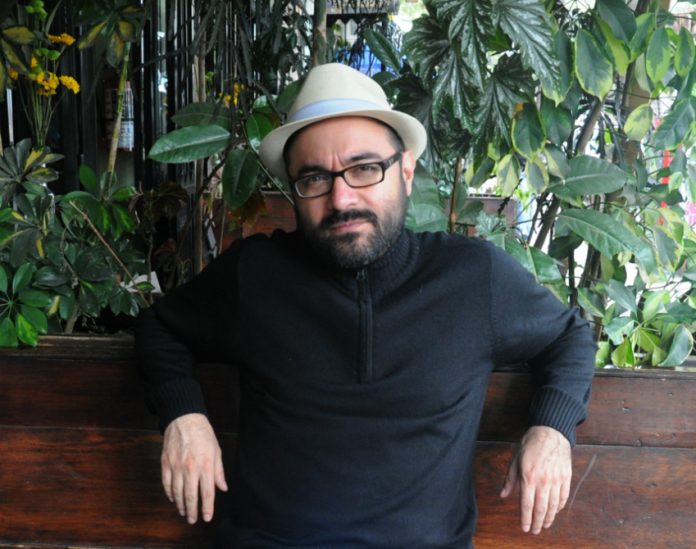Bernardo Esquinca, a Guadalajara native who now calls Mexico City home, is an innovative and prolific writer who has published novels, short stories and non-fiction in a literary career spanning 30 years.
While he writes in Spanish, anglophone bibliophiles can read eight of Esquinca’s weird and wonderful short stories in the translated collection The Owls Are Not What They Seem, and one – Señor Ligotti – in the first volume of The Valancourt Book of World Horror Stories.
Another English-language anthology of the Shirley Jackson Award-nominated author’s cuentos (short stories) will be published later this year. According to the publisher, the stories “blend the genres of horror and noir in inventive ways and run the gamut from chilling to weirdly unsettling to darkly funny.”
I recently spoke to Bernardo to find out a little bit more about his literature, the adaptation of one of his novels for television, his involvement in the making of a well-known Netflix horror series and more.
Peter Davies:
Hi Bernardo, thanks for speaking to Mexico News Daily. Your literature is often described as “weird fiction.” How do you describe it yourself? And can give you give us a brief overview of your career as an author.
Bernardo Esquinca:
I write crime fiction mixed with horror and fantasy. I’ve always liked to blend genres, I think it’s the most effective way to tell the kind of stories that interest me, ones in which we’re not exactly in the world that surrounds us, but rather beneath its superficial layers.
I started writing mystery stories when I was a kid. My first book of short stories was published when I was 21. It was always very clear to me that I wanted to dedicate myself to literature. I’ve now been publishing my books with the publishing house Almadía, which is proudly Mexican, for 15 years.
PD:

Your 2013 novel Toda la Sangre was recently adapted as a series for the streaming service Lionsgate+. Can you tell us a little bit about that book and what it was like seeing it depicted in a different medium?
BE:
It’s a crime novel that is part of the Casasola saga – the second of five novels I’ve published [in that series]. It’s about the adventures of a nota roja [violent crime] reporter in Mexico City, who in this case is confronted by the Asesino Ritual (Ritual Murderer) – a lunatic who carries out human sacrifices with the idea that the ancient gods of Tenochtitlán will return.
Seeing it on screen was a lot of fun, as was closely following the adaptation. I consider myself very fortunate because getting books onto TV isn’t easy, a lot of projects only get half-finished. Hopefully a second season will be made!
PD:
Mexico City features as a setting in several of your novels, including your 2022 release Necropolitana. In what ways has living in the capital inspired you and/or influenced your writing?
BE:
I’m from Guadalajara but I’ve lived in Mexico City for 20 years and it has become the main character in my books. It’s a very important influence in everything I write, the ideal setting for my literature because everything is possible in this city.
PD:
A collection of your short stories, translated to English, is coming out later this year. What can you tell us about The Secret Life of Insects?
BE:
It’s a selection of my short story work from the past 15 years. It contains stories from my first books as well as the most recent ones, and even some unpublished ones. Valancourt Books, an independent publisher in Virginia that specializes in horror fiction, is publishing it. I’m honored to be part of their catalog!
PD:
What was your involvement with Diablero, the Netflix series based on Francisco Haghenbeck’s novel El Diablo me obligó?
BE:
I was an advisor for the first season, and I make a cameo in the second one – I appear as a revolutionary zombie.
J.M. Cravioto, the showrunner and director, is a good friend, and as Paco’s literature and mine have things in common he invited me to collaborate.
PD:
Who are a few authors that have influenced your own writing, or even inspired you to become a writer. And finally, can you recommend some contemporary Mexican or Latin American writers.
BE:
Some of the authors who have influenced me are Edgar Allan Poe, Shirley Jackson, Stephen King, Amparo Dávila, José Emilio Pacheco, James Ellroy, Rubem Fonseca and Cormac McCarthy.
I recommend reading the following female Latin American authors: Mariana Enríquez, Mónica Ojeda, Liliana Colanzi, Liliana Blum, Agustina Bazterrica, Camila Sosa Villada, María Gainza and Ana Paula Maia.
They, among other female authors, are writing the continent’s most stimulating literature.
- Visit Bernardo’s author page on the Almadía website to read a short profile of the author and see a selection of his books. Valancourt Books’ full synopsis of The Secret Life of Insects can be read on the publisher’s website.
This interview is the fifth in a series called “The Saturday Six”: six-question interviews published in Saturday editions of Mexico News Daily. Read the three most recent previous interviews in the series here, here and here.
